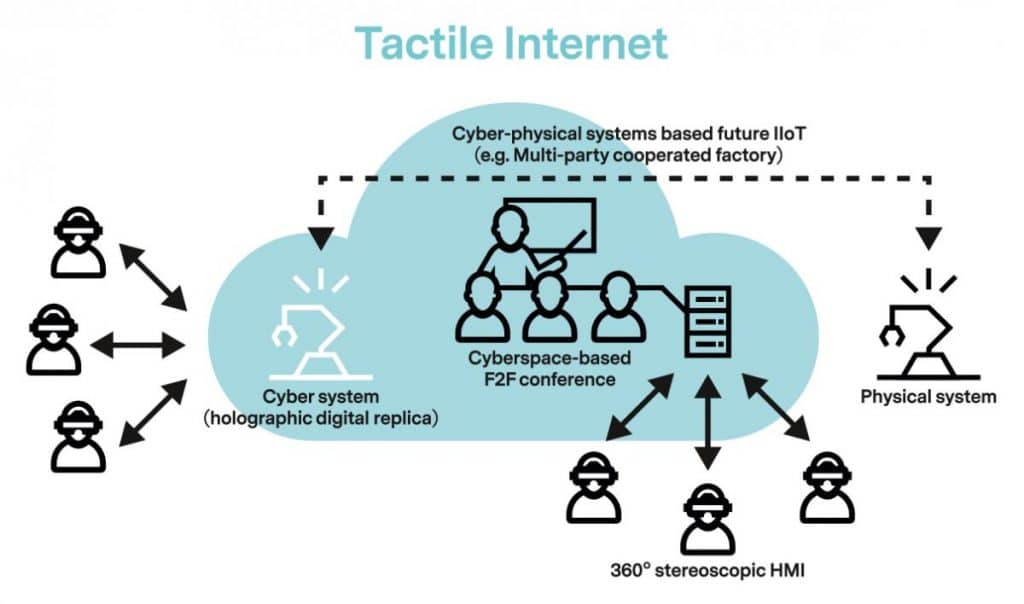
Extreme Ultra Reliable Low Latency Communication Revolutionizes System Performance
Finland and South Korea are two countries with strong footprints in technology, particularly in wireless communications. After contributing to the world’s first commercial success of 5G, the countries are now jointly developing future IoT connectivity for demanding industrial settings.
Since April 2020, Electronics and Telecommunications Research Institute (ETRI) in South Korea and University of Oulu in Finland have collaborated on a joint project to build a long-term vision of next-generation Ultra Reliable Low Latency Communications (URLLC) services, focusing on specific use cases and key technical requirements.
Due to the growing demands from various verticals, especially Industry 4.0, it is crucial to evolve URLLC beyond 1ms latency and reliability of 99.999%. “Current 5G URLLC technology has inherent limitations to fully support future services in the view of data rate, connectivity, and latency,” says Dr. Hyun Kyu (HK) Chung, project coordinator at ETRI. “These shortcomings emerge due to the mostly independent operation of three novel service scenarios in 5G: enhanced mobile broadband (eMBB) targeting broadband users; massive machine type communications (mMTC) targeting large numbers of IoT devices; and URLLC targeting communications with strict performance guarantees. Therefore, future 6G systems will need to integrate multiple, or even all, of the service scenarios, and must evolve to push the current limits to support an integrated but efficient framework.”
The joint work began with the question of identifying the evolution of URLLC from 5G to 6G and recognizing the areas where a clear disruption is needed. “We are now proposing new service classes such as broadband URLLC, scalable and extreme URLLC and investigating candidate enabling technologies,” says Adjunct Professor Nurul Huda Mahmood project coordinator in 6G Flagship. “Out of the many interesting open research questions on next generation URLLC, we have identified two core technology topics for joint research work – adaptive polar coding and position-aided predictive radio resource management – both of which are relatively novel topics with huge potential gain in improving the system performance.”
Adaptive polar coding is a low-complexity coding scheme that is expected to ensure highly reliable transmissions that can easily adapt to the random fluctuations of the wireless channels. On the other hand, position-aided predictive radio resource management algorithms will utilize the location information of the devices and advanced predictive techniques to ensure high data rates with high reliability and low latency.

Tactile Internet, as a key driver for URLLC evolution, is an illustrative example of applications of these core technologies, which can enable various applications for example in Industry 4.0 use cases including digital twins and other human machine interface (HMI) applications. A vast array of IoT devices collecting real-time data through robust wireless connectivity allows the digital twins to dynamically update and change along with their physical counterparts, collectively known as cyber-physical systems (CPS). A CPS-based Tactile Internet opens doors to a wide range of novel applications. For example, experts equipped with wearables and other HMI-enabled devices may remotely operate physical systems from distant locations, diagnose and repair them in case of failures, and make informed and rational production plans based on accurate predictions powered by advanced artificial intelligence algorithms. Furthermore, multiple experts located in different locations may seamlessly interact with the digital twins to virtually implement and test new features before they are deployed in the real physical systems.
The Cyberspace-based tactile internet use cases, on the other hand, comprise of humans wearing wearables and interacting with virtual spaces implemented in the network, where the users feel as if they were present in a real place of interest directly interacting with its surroundings. One example is a face-to-face (F2F) conference where remote attendees feel as if they were in a conference room where they can look at any direc-tion. The ongoing COVID-19 pandemic has further highlighted the demand for such applications.
The development of Tactile Internet based service scenarios in now ongoing and the project partners aim to validate them in real test network deployments at ETRI and University of Oulu that are already pushing the limits of current standards. “In practice, ETRI’s state-of-the-art Industrial IoT Testbed, which is based on the latest 3GPP 5G release, shows that it is almost impossible to achieve end-to-end latency less than the minimum end-to-end latency required for some use cases in factory automation in recent 5G standard using the current 5G implementation,” says Dr. Jaesheung (Jason) Shin who is a principal engineer at ETRI and the leader for the Test and Validation work package. “This motivates the development of an extreme URLLC service mode, which was suggested for the industrial use of 6G in a recent WWRF meeting and could be referred to in terms of our joint test network demonstrations in the future.”
Considering the track-records and prior success stories in 5G adoption of ETRI and University of Oulu, this effort is expected to truly showcase how cross-continental collaboration promotes innovative research with high societal impact.
Electronics and Telecommunications Research Institute – ETRI
- National AI Research Institute, established in 1976
- Groundbreaking ICT innovator focusing on research, development and distribution of industrial core technologies in the field of Information, Communications, Electronics, Broadcasting and Convergence technologies
- Recent R&D achievements include Deepview – Visual intelligence source technology platform; Time Controlled Tactile Optical Access (TIC-TOC) – 25Gbps-class tactile Internet technology; and UHD mobile broadcasting technology
- ~ 2 260 employees
- 2 632 patent applications (domestic and international, 2019)
- 683 adopted standards contributions (domestic and international, 2019)
- Watch ETRI’s video